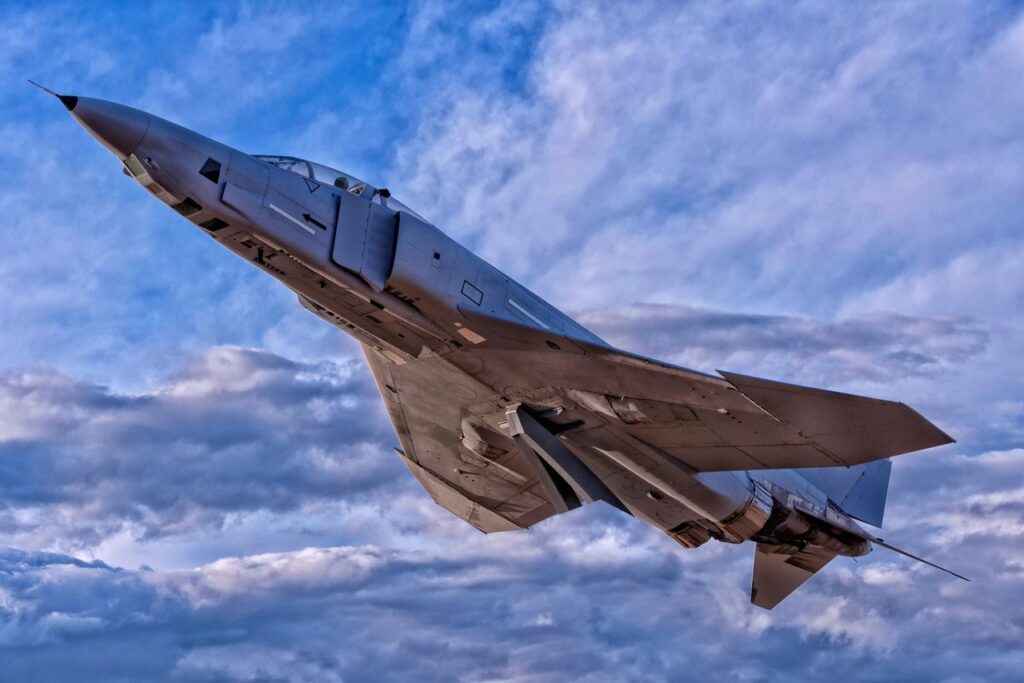
Aircraft Carrier Showdown: The Falklands War Nearly Set A World-First Record For Naval Warfare
Key point: Mild weather saved the day.
On the afternoon of May 1, 1982, crewmen on the deck of the Argentine carrier Veinticinco de Mayo (“May 25”) scrambled to load six A-4Q Skyhawk attack planes with four Mark 82 bombs each.
The subsonic jets were to be the tip of the spear of Argentine Navy Task Force 79 as it attacked a British Royal Navy fleet roughly 140 miles away, including the carriers Hermes and Invincible, eight escorting destroyers and fifteen frigates.
The opposing fleets were facing off over the sparsely-populated Falkland Islands, known as the Malvinas in Argentina. A month earlier, Argentine troops had seized the disputed archipelago. Now the British warships were covering amphibious forces moving to take the islands back.
Few of the half-dozen Argentine aviators expected to survive the attack, dubbed “Banzai Night” after the famous Japanese battle cry. In the book A Carrier at Risk by Mariano Sciaroni, the Skyhawk squadron’s leader Rodolfo Castro Fox reveals the grim calculations behind the planned attack:
By using the table of probabilities, considering the capabilities of British anti-aircraft defences, of our six initial aircraft, four would get into position to drop their bombs and only two would make it back.
Of the sixteen bombs that we would release, there would be a probability of impact of 25 percent, in other words, four bombs of 500 pounds. This could neutralize the carrier and the loss of four aircraft would be acceptable.
Following the strike, a squadron of three Argentine A69-class corvettes would attempt to capitalize on the chaos and their small radar-cross sections to launch a surprise missile attack using Exocet MM38 missiles fired from over twenty miles away.
At the same time, the gun-armed cruiser General Belgrano and two destroyers would pincer attack from the south. Unbeknownst to the Argentinians, Belgrano was then being tailed by the British nuclear-powered submarine Conqueror, merely awaiting permission to launch torpedoes.
The Argentineans anticipated the Royal Navy might counter-attack with the twenty Sea Harrier jump jets then on the Hermes and Invincible, which had already begun airstrikes on Argentine troop positions. The Veinticinco was protected by three destroyers, including two modern Type 42s armed with Sea Dart surface-to-air missiles which could accelerate up to three times the sound to hit higher-flying aircraft up to forty-six miles away.
All that stood in the way of potentially the most destructive air/sea-battle since World War II—and the only to occur between aircraft carriers—was a stiff breeze. Or rather, the lack of one.
The Strange Odyssey of HMS Venerable
Ironically, the Veinticinco de Mayo was originally a British carrier named the HMS Venerable launched by the Cammell Laird shipyard near the end of World War II. The 13,200-ton Colossus-class light fleet carrier measured 210-meter long and could carry up to fifty piston-engine fighters and torpedo bombers. Venerable saw action in the final months of the Pacific War against Japan, then three years later was sold to the Royal Netherlands Navy and renamed Karel Doorman.
The Dutch installed an angled flight deck and a steam catapult to assist in the launch of a Sea Hawk jet fighters, and deployed Karel in the confrontation with Indonesia over the decolonization of West New Guinea. The carrier narrowly avoided being attacked by missile-armed Tu-16 Badger bombers thanks to timely peace talks.
After a damaging boiler-room fire, the Karel was sold in 1969 to the Argentine Navy which extensively modernized and rebuilt the 25-year-old vessel. Initially, the carrier carried Korean-war era Panther and Cougar jets onboard, then upgraded to light and easy-handling A-4Q Skyhawks. These were re-built U.S. Navy A-4Bs modified with five weapon pylons and Sidewinder air-to-air missile capability.
However, the carrier’s troublesome boilers were never fully restored to spec, limiting it to well below its theoretical maximum of 24 knots.
The Argentine Navy planned to eventually deploy French-built Dassault Super Etendards jets on the carrier with deadly Exocet missiles that could attack ships from beyond visual range—a capability the Royal Navy particularly feared.
In fact, a week earlier on April 23 the British submarine Splendid had spotted the Veinticinco—but could not obtain authorization to attack. These rules of engagement were soon amended.
In fact, the Veinticinco could not yet support Etendards. It had only eight Skyhawks capable of lugging unguided bombs and six Grumman S-2E Trackers purchased from the U.S. Navy in 1978. The slow twin-engine propeller planes could scan the seas for submarines using Jezebel sonar buoys and APQ-88 surface-search radars.
The Tracker’s radar was also perfectly capable of detecting the position of the sprawling British fleet from dozens of miles away—as indeed occurred at 3:15 p.m. on May 1.
So informed, Captain José Julio Sarcona ordered the 3rd Naval Fighter/Attack Squadron to prepare six jets for a strike. But his plan was frustrated by an unlikely problem: calm weather was preventing the jets from taking off.
Since the dawn of carrier aviation during World War I, skippers have sought to ease takeoffs and landings by cruising at maximum speed into the wind, just as one might loft a kite while running into a stiff breeze. The ship’s velocity combined with the opposing wind adds to the airflow over an aircraft’s wings, reducing the speed necessary for takeoff.
The combination of the Veinticinco’s short deck, her inability to accelerate to high speeds, and the one-ton bomb loads carried by the Skyhawks meant they simply needed the wind to make it off the deck. But that afternoon, meteorologists forecast twelve to twenty-four hours of dead winds on the usually turbulent South Atlantic.
Sarcona considered halving the bombload to make takeoff more likely. But this would have so reduced the raid’s damage potential that the sacrifice of the Skyhawks could not be justified.
Then at half past midnight, the Veinticinco’s time finally ran out.
The Harrier and the Sea Dart
Though the United States had historically supported the violently anti-Communist Argentinean military dictatorship, Washington ultimately sided with the UK during the Falkland War. That meant sharing photo-intelligence gathered by the CIA’s Snow Cloud spy satellite, which revealed the rough position of the Argentine fleet.
But the Royal Navy still didn’t have a precise idea of its opponent’s position. That evening, a Sea Harrier flown by Flight Lieutenant Ian Mortimer was dispatched on stealthy scouting mission, skimming just 200 feet above sea level with its radar deactivated.
As described in Sea Harrier over the Falklands by Harrier squadron leader Nigel “Sharkey” Ward, Mortimer didn’t initially spot any ships so he turned on his radar:
“The next thing I knew I was being illuminated by all sorts of radar including Sea Dart fire-control, and I counted four ship contacts less than 25 miles away.”
Mortimer promptly turned his radar back off and raced back to the fleet.
Argentine accounts in Sciaroni’s book instead describe two Sea Harriers tailing one of the S-2 Trackers from fifteen to twenty miles away. One of the British jets was then illuminated by the Type 909 Sea Dart targeting radar of one of the escorting destroyers, causing the Harrier to retreat.
Either way, the British were now aware of the Argentinean task force’s position—and could potentially attack it with Harriers and attack submarines.
Sarcona could not accept the risk. He turned the Veinticinco about onto a northwestern trajectory. The carrier was now fighting for her survival as she raced back towards the safety offered by the Argentine coast.
Indeed, at 3 p.m. on May 2, the Conqueror finally torpedoed the General Belgrano, which sank with the loss of 323 lives.
The ensuing game of cat-and-mouse detailed by Sciaroni’s book involving the Veintcinco’s anti-submarine aircraft and British submarines will be the subject of a forthcoming article.
Thus, we can thank a day of unusually mild weather on May 1, 1982 for leaving us with many more living Argentinian and British sailors and aviators today than might otherwise have been the case.
Sébastien Roblin holds a master’s degree in conflict resolution from Georgetown University and served as a university instructor for the Peace Corps in China. He has also worked in education, editing, and refugee resettlement in France and the United States. He currently writes on security and military history for War Is Boring. This article first appeared earlier this year.
Image: Wikipedia.


